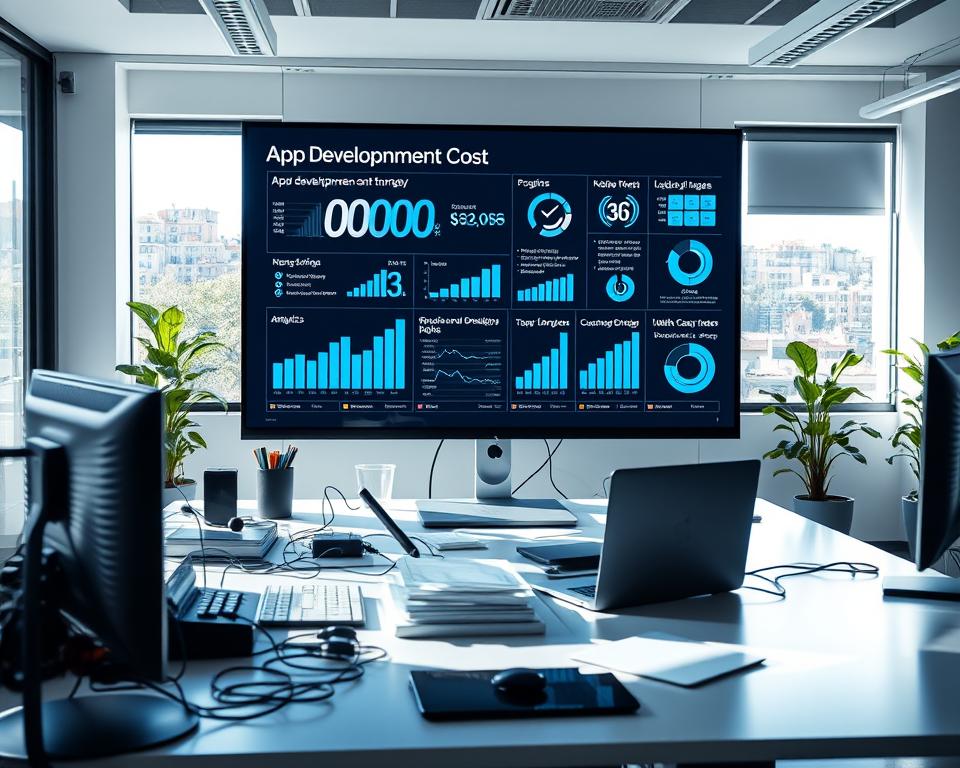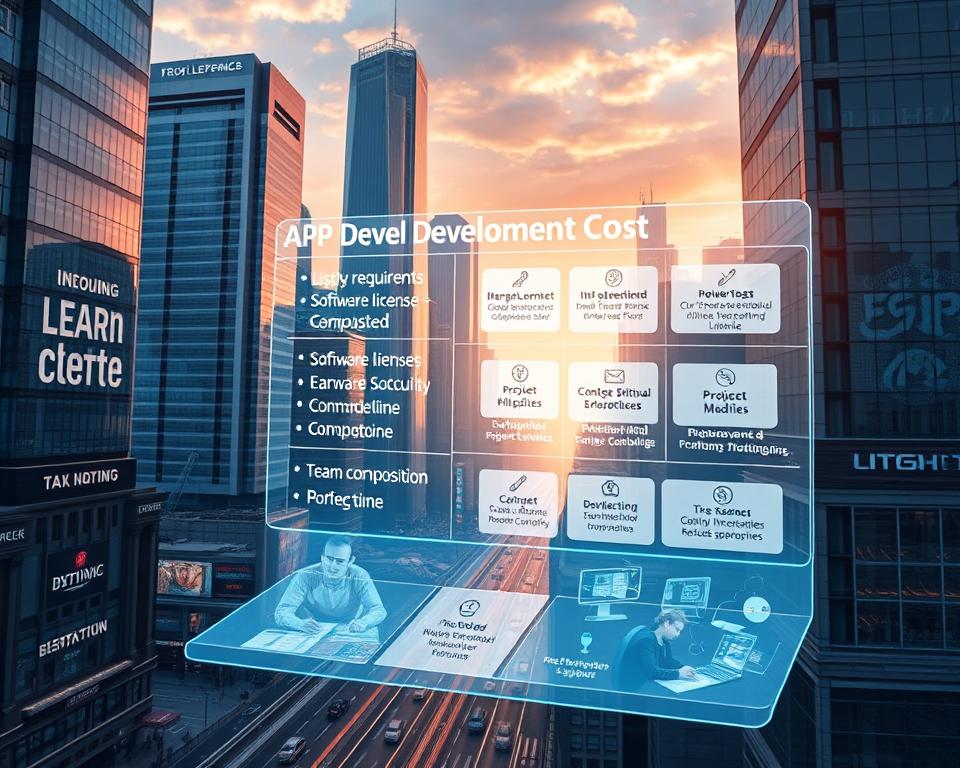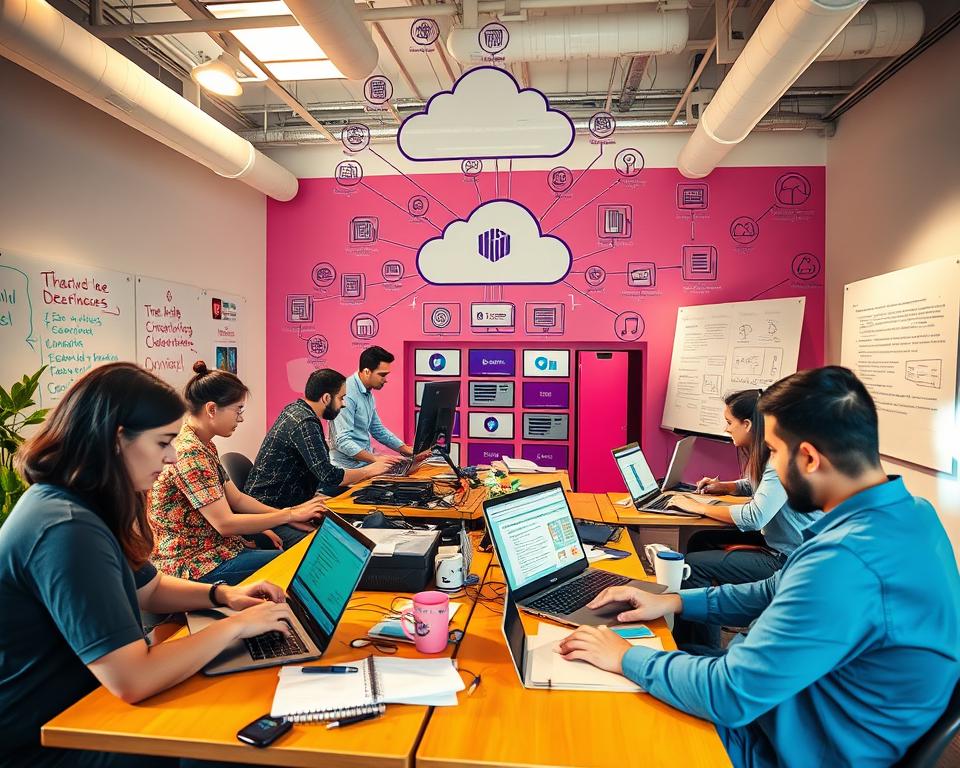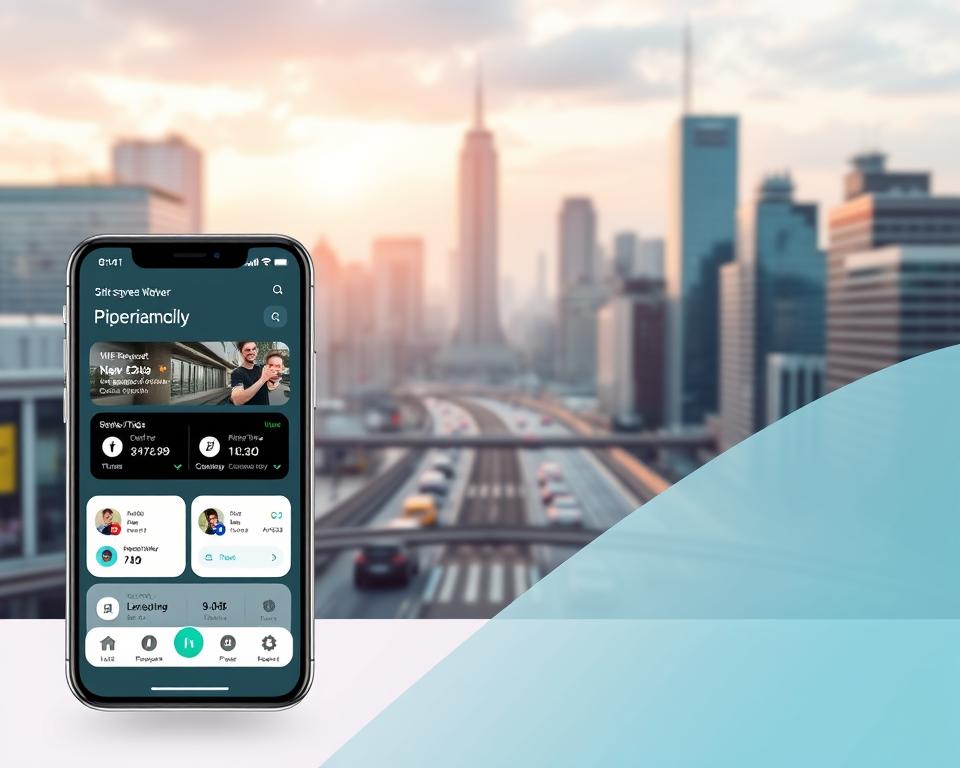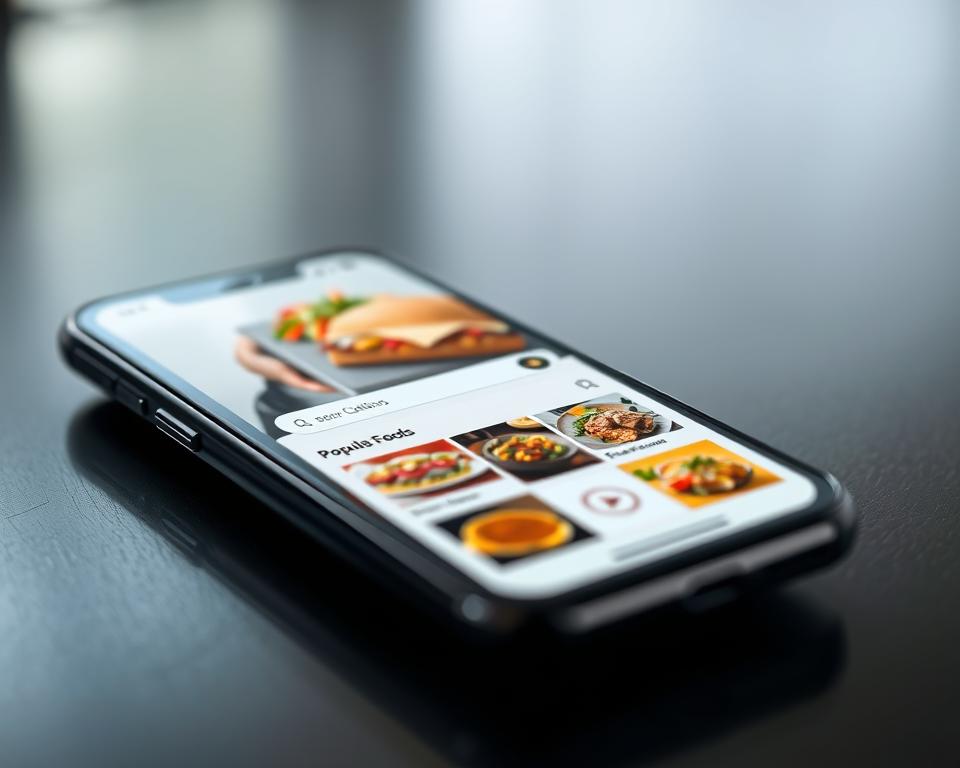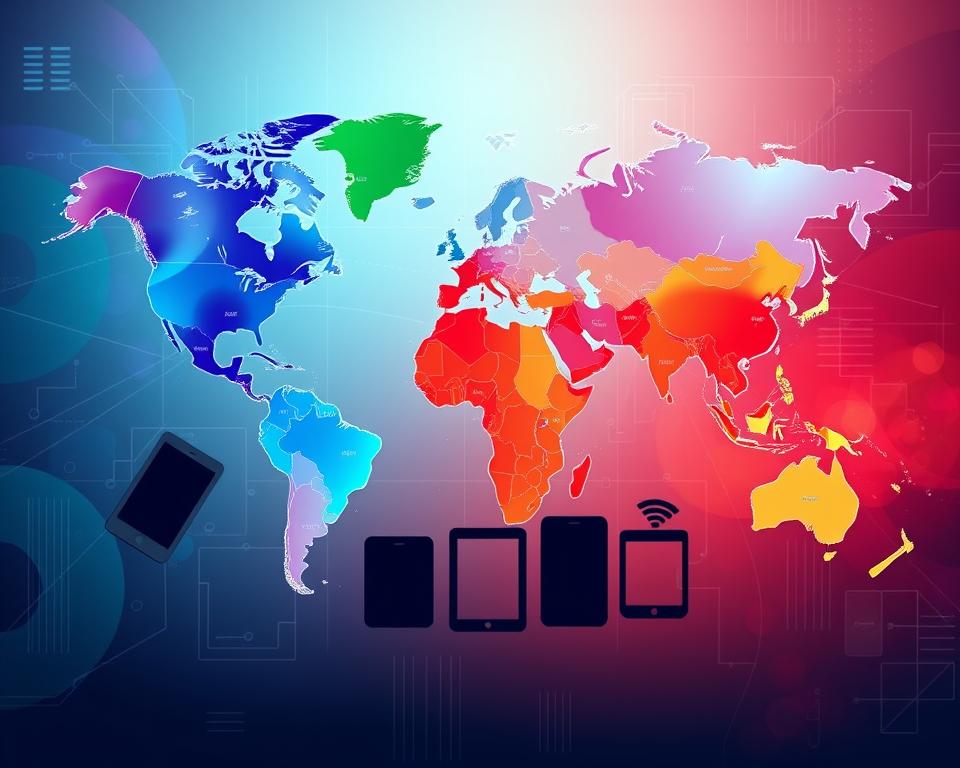Creating a successful app like Uber, Zomato, or Dream11 needs a deep understanding of the app development cost. The cost to make such apps varies a lot. This depends on the app’s complexity, the tech used, and where the developers are.
Knowing these costs is key for businesses and entrepreneurs wanting to make a Uber clone, Zomato clone, or Dream11 clone. This article will explain what affects app development cost. It will also talk about the costs for different types of apps.
Table of Contents
Key Takeaways
- Factors influencing app development costs include complexity, technology stack, and development team location.
- Building a successful app requires understanding these costs upfront.
- Uber, Zomato, and Dream11 are examples of complex apps with unique development requirements.
- The cost to develop a clone of these apps can vary based on the features and functionalities included.
- Understanding the app development process is crucial for budgeting and planning.
The App Development Landscape in2025
The app development world in 2025 is all about new tech like AI and machine learning. This makes on-demand app development better. Now, businesses can give users experiences that feel just right for them.
Current Market Trends in App Development
The mobile app world is moving fast towards on-demand services. Apps like Uber, Zomato, and Dream11 are leading the way. They show us what great user experiences look like, thanks to the latest tech.
“The future of app development lies in creating seamless, intuitive experiences that integrate AI and machine learning to predict user needs.” –
Technological Advancements Shaping Development Costs
New tech is changing how much it costs to make mobile apps. AI and machine learning, and blockchain for safe transactions, are key areas to watch.
AI and Machine Learning Integration
AI and machine learning are changing the app world. They make predictive analytics and personalized user experiences possible. But, they also make apps more expensive because they need special skills and tools.
Blockchain and Secure Transactions
Blockchain is becoming popular for safe app transactions. It makes apps more secure and builds trust with users. This is key for on-demand services to succeed.
| Technological Advancement | Impact on Development Costs |
|---|---|
| AI and Machine Learning | Increased costs due to specialized expertise and infrastructure |
| Blockchain Technology | Enhanced security, potentially reducing long-term costs related to data breaches |
As the app world keeps changing, businesses need to keep up with new trends and tech. This is how they stay ahead.
Key Factors Influencing App Development Costs
Several key factors affect the cost of making a mobile app. It’s important for businesses to understand these to budget well. This helps in making smart choices for their app projects.
App Complexity and Feature Set
The app’s complexity and features greatly influence the cost. Simple apps with basic functions are cheaper. But, apps needing advanced features or real-time data are more expensive.
- Simple apps with limited features
- Moderately complex apps with some integrations
- Highly complex apps with multiple integrations and advanced features
Platform Selection (iOS, Android, Cross-platform)
Choosing the app’s platform affects the cost. Costs vary for iOS, Android, or both, and cross-platform options. Each has different needs and skills.
Key considerations include:
- Native development for iOS or Android
- Cross-platform development using frameworks like React Native or Flutter
UI/UX Design Requirements
The app’s design is key for user happiness. Design costs vary with the design’s complexity and customization needs.
Custom vs. Template-Based Design
Custom designs are unique but pricier. They fit the brand well. Template designs are cheaper but less unique.
Animation and Interactive Elements
Animations and interactive parts improve the app but increase costs. The more complex, the higher the cost.
Breaking Down the App Development Process
Creating a successful app takes several key stages. From planning to post-launch maintenance, each phase is important. Knowing these steps helps estimate the total cost of app development.
Planning and Research Phase
The first stage is planning and research. Here, we define the app’s purpose and identify the target audience. We also do market research to understand competitors and user needs. A well-planned strategy is essential for the app’s success, guiding the development and ensuring it meets user expectations.
Design and Development Phase
In the design and development phase, the app starts to take shape. We create wireframes, design the user interface (UI), and develop the app’s features. The complexity of the app’s features significantly impacts development costs. For example, adding real-time tracking or payment gateways requires more resources than simple apps.
Testing and Deployment Phase
After development, the app goes through rigorous testing. This phase identifies and fixes bugs, ensuring a smooth user experience. Once tested, the app is deployed to app stores. Testing is a critical phase that ensures the app’s quality and reliability.
Maintenance and Updates
After launch, the app needs regular maintenance and updates. This includes fixing issues, adding new features, and keeping up with user needs and technology. Ongoing maintenance is crucial for keeping the app relevant and competitive in the market.
Understanding these phases helps developers and businesses estimate resources needed for app development. This way, they can plan better.
Cost to Develop an App Like Uber, Zomato, or Dream11 in2025
In 2025, making an app like Uber, Zomato, or Dream11 will cost a lot. This cost depends on the app’s type and what it can do. The price can change a lot based on how complex it is, which platform it’s for, and its features.
Average Cost Ranges by App Type
App development costs vary by type. A simple app with few features might cost between $40,000 to $100,000. But, apps like Uber or Zomato need more advanced stuff like tracking, payments, and a strong backend. These can cost from $150,000 to $500,000 or more.
| App Type | Basic Cost Range | Complex Cost Range |
|---|---|---|
| Ride-Sharing | $50,000 – $150,000 | $200,000 – $500,000 |
| Food Delivery | $40,000 – $120,000 | $150,000 – $400,000 |
| Fantasy Sports | $30,000 – $100,000 | $100,000 – $300,000 |
Development Timeline Expectations
Creating an app like Uber, Zomato, or Dream11 can take months to a year. A simple app might take 3-6 months. But, a complex app could take 9-18 months or longer.
Cost Comparison Between Different App Categories
App categories have different costs. Let’s look at the costs for ride-sharing, food delivery, and fantasy sports apps.
Ride-Sharing vs. Food Delivery vs. Fantasy Sports
Ride-sharing apps like Uber need features like tracking and fare calculation. Food delivery apps like Zomato require restaurant integration and order tracking. Fantasy sports apps like Dream11 need user profiles and contest management.
| Feature | Ride-Sharing | Food Delivery | Fantasy Sports |
|---|---|---|---|
| Real-time Tracking | Yes | Limited | No |
| Payment Integration | Yes | Yes | Yes |
| Complex Algorithm | Yes | No | Yes |
Developing a Ride-Sharing App Like Uber
Making an Uber clone is more than copying features. It needs a smart plan to stand out. Your app should be easy to use, have a strong backend, and unique features.
Essential Features and Their Development Costs
The key to a ride-sharing app’s success is its features. Here are some must-haves and their costs:
Real-Time Location Tracking
Real-time location tracking lets users and drivers know where they are. It uses GPS and mapping APIs. Costs range from $5,000 to $10,000, depending on the complexity.
Payment Gateway Integration
A good payment gateway integration is key for safe transactions. It connects to services like Stripe or PayPal. Costs are $3,000 to $8,000, based on the payment options and complexity.
Driver-Rider Matching Algorithms
The driver-rider matching algorithm is crucial. It matches drivers with riders efficiently. A good algorithm can be complex and cost over $15,000.
Technology Stack Requirements
The tech stack for a ride-sharing app includes frontend, backend, and database tools. Frontend can be native or cross-platform. Backend uses Node.js, Python, or Ruby. A database like MySQL or MongoDB is needed. Choosing the right tech is key for performance.
Development Time Estimation
Creating a ride-sharing app like Uber takes time. It depends on feature complexity, tech stack, and team size. On average, it takes 6 to 12 months. This includes planning, design, development, testing, and deployment.
Developing a Food Delivery App Like Zomato
To create a food delivery app like Zomato, you need to think about several things. These include the app’s features, the technology used, and how long it will take to make. A detailed plan helps ensure the app meets user needs and stands out in the market.
Essential Features and Their Development Costs
For a food delivery app to succeed, it must have certain key features. These include a user-friendly interface, quick order processing, and a strong restaurant management system.
Restaurant Management System
A restaurant management system is key for restaurants to manage their menus, stock, and orders well. This feature needs a simple interface and to work smoothly with the app.
Order Tracking and Notifications
Order tracking and notifications make the app better by keeping users updated on their orders. This feature needs GPS tracking and push notifications.
Rating and Review System
A rating and review system lets users share their experiences. This builds trust and improves services. It requires a simple way for users to leave reviews and see ratings.
Technology Stack Requirements
Choosing the right technology stack is important for the app’s performance and growth. A food delivery app like Zomato needs a mix of front-end, back-end, and database technologies.
- Front-end: React Native or Flutter for cross-platform use
- Back-end: Node.js or Django for strong server functions
- Database: MySQL or MongoDB for good data management
Development Time Estimation
The time it takes to develop a food delivery app varies. It depends on the app’s features and the technology used. On average, making an app like Zomato takes 6 to 12 months.
Working efficiently and having a skilled team are key to meeting deadlines and creating a top-notch app.
Developing a Fantasy Sports App Like Dream11
To make a fantasy sports app like Dream11, knowing the key features is crucial. These apps are popular for letting users enjoy their favorite sports in a new way.
Essential Features and Their Development Costs
A fantasy sports app’s success relies on several important features. These include a user-friendly interface, live scoring, and good contest management.
User Team Creation Interface
A good team creation interface is key. It lets users pick players and join contests easily. This part needs intuitive UI/UX design and seamless backend integration with player and contest systems.
Live Scoring System
A live scoring system keeps scores up to date, making the app more engaging. It involves working with sports data feeds and a strong backend for updates.
Contest Management and Leaderboards
Contest management and leaderboards are essential. They help organize contests and show rankings. This part needs a complex backend for managing rules, submissions, and scores.
| Feature | Development Cost | Complexity Level |
|---|---|---|
| User Team Creation Interface | $8,000 – $12,000 | Medium |
| Live Scoring System | $10,000 – $15,000 | High |
| Contest Management and Leaderboards | $12,000 – $18,000 | High |
Technology Stack Requirements
The tech stack for a Dream11-like app should include:
- Frontend: React Native or Flutter for cross-platform use
- Backend: Node.js with Express.js for API requests and data processing
- Database: MongoDB or PostgreSQL for storing data and stats
Development Time Estimation
How long it takes to make a fantasy sports app depends on the features and team size. On average, it’s 6 to 9 months for a fully functional app like Dream11.
Regional Cost Variations in App Development
App development costs change based on where the team is located. The price can vary a lot because of labor costs, tech setup, and market conditions in different places.
North America vs. Western Europe
North America and Western Europe have some of the highest app development prices. Developers here charge between $100 to $250 an hour. For example, making a complex app in the U.S. could cost from $150,000 to over $500,000.
Western Europe is also pricey but might have slightly lower rates. But, the cost stays high because there’s a big demand for skilled developers.
Eastern Europe and Asia
Eastern Europe and Asia are cheaper options for app development. Countries like Poland, Ukraine, and India offer good quality at lower prices. Their hourly rates are between $25 to $75, much less than in North America and Western Europe.
This makes them great for businesses wanting to make apps without spending too much.
Impact of Outsourcing on Development Costs
Outsourcing app development to cheaper regions can cut costs a lot. But, it’s important to think about the quality. Saving money is good, but the work must still be high-quality.
Quality Considerations with Offshore Development
When you outsource app development, quality is key. You should:
- Look into the development company’s past work and what clients say.
- Make sure you can talk clearly to avoid any mix-ups.
- Be clear about what you expect in terms of time, quality, and what you’ll get.
By doing these things, you can lower the risks of offshore development and get what you need.
In summary, different regions offer various options for app development costs and quality. Knowing these differences helps businesses choose the right place to outsource their app projects.
Hidden Costs in App Development Projects
When making an app, it’s key to think about more than just the obvious costs. Hidden expenses can also affect your budget a lot. The cost of making the app is a big part, but other costs can pop up during and after.
Third-Party API Integration Costs
Using third-party APIs can make your app better, but it costs money. Some APIs charge per use, while others have a flat fee. For example, Google Maps charges for each use, which can add up fast if your app is popular.
Server and Infrastructure Expenses
Server costs depend on the hosting type and how much your app needs to grow. Cloud services like AWS or Google Cloud are flexible but can get pricey as more users join.
App Store Fees and Compliance Costs
Putting your app on stores like Apple App Store or Google Play costs money. Apple charges $99 a year, while Google Play asks for a one-time $25 fee. Also, making sure your app meets store rules can cost extra, especially if you need to change it a few times.
Legal and Regulatory Considerations
Legal fees can come from making sure your app follows privacy laws (like GDPR in Europe), copyright rules, and other rules. These costs can change a lot based on where you are and how complex your app’s data handling is.
| Hidden Cost Category | Average Cost Range | Description |
|---|---|---|
| Third-Party API Integration | $500 – $5,000 | Costs vary based on API usage and type |
| Server and Infrastructure | $1,000 – $10,000 | Dependent on hosting type and scalability |
| App Store Fees | $25 – $99 | Annual or one-time fees for app publication |
| Legal and Regulatory Compliance | $2,000 – $20,000 | Costs associated with legal counsel and compliance |
Knowing about these hidden costs is key for app makers to plan their budget well and avoid surprises. By thinking about these points, developers can make a better financial plan. This helps ensure their app project is a success.
Cost-Saving Strategies Without Compromising Quality
Effective cost-saving strategies can lower app development costs without sacrificing quality. Apps like Uber, Zomato, or Dream11 need careful planning. This ensures the app meets user expectations without going over budget.
MVP Approach for Initial Launch
Using the Minimum Viable Product (MVP) approach is a smart cost-saving strategy. It focuses on the core features that users value most. This way, the app can launch quickly and improve based on user feedback. It saves money and reduces the risk of features not being liked by users.
Cross-Platform Development Options
Choosing cross-platform development is another cost-effective strategy. It lets developers make apps for different platforms like iOS and Android with one codebase. This method cuts down on development time and costs.
React Native vs. Flutter vs. Native Development
For cross-platform development, React Native and Flutter are popular choices. React Native uses JavaScript and JSX, making development feel more like web development. Flutter, on the other hand, uses Dart and has a wide range of pre-designed widgets. The best choice depends on the project’s needs and the team’s skills.
Strategic Feature Prioritization
It’s key to prioritize features based on their importance and impact. Focusing on the most critical features first ensures the app provides value. Less important features can be added later.
Using Ready-Made Components and SDKs
Using pre-made components and SDKs can also cut costs. These components can be added to the app, saving time and resources. This is because they don’t need to be built from scratch.
By using these strategies, developers can make high-quality apps that meet user needs without spending too much. It’s about being smart and flexible in the development process, always thinking about the user.
Choosing the Right Development Partner
Choosing the right partner for your app is key. The partner you pick will greatly affect your app’s success.
In-house vs. Outsourced Development
First, decide if you want to develop in-house or outsource. In-house development means more control but costs more in talent and infrastructure. Outsourced development is cheaper and offers more expertise.
“According to a survey by Statista, 46% of companies prefer outsourcing their app development projects to external agencies.”
“Outsourcing app development can be a strategic move, allowing businesses to focus on their core competencies while leveraging the expertise of external developers.”
Evaluating Development Agencies
When looking at development agencies, check their portfolio and client feedback. Make sure they have experience with apps like yours. Good communication and project management are also key.
Contract and Payment Structures
The contract and payment terms with your partner are crucial. It’s important to know the different options.
Fixed Price vs. Time and Materials
A Fixed Price contract means paying a set amount for the whole project. It’s clear on costs but can be risky if the project changes. A Time and Materials contract means paying for actual time and resources. It’s flexible but can lead to higher costs if not managed well.
- Fixed Price is good for projects with clear needs.
- Time and Materials works best for projects that change.
The right choice depends on your project’s needs and how much risk you can take.
Post-Launch Expenses to Consider
Launching an app is just the start. Understanding post-launch expenses is key for success. Costs for upkeep and updates can be high. It’s important to plan for these to keep the app competitive and meet user needs.
Maintenance and Support Costs
Keeping the app running smoothly is crucial. This includes fixing bugs and keeping up with system updates. These costs are usually 15% to 20% of the original cost each year. This covers:
- Bug fixing and troubleshooting
- Technical support for users
- Compatibility updates for new OS releases
Feature Updates and Enhancements
Adding new features keeps users interested and attracts new ones. The cost varies based on the complexity. It’s smart to focus on updates that users want and that fit market trends.
Scaling Infrastructure as User Base Grows
As more people use the app, it needs to handle more traffic. This might mean upgrading servers or using cloud services. These costs can be high and should be planned for.
Marketing and User Acquisition Costs
Marketing is key after launch to keep and get new users. This includes:
- Social media advertising
- Influencer partnerships
- Content marketing and SEO
- Email marketing campaigns
Here’s a breakdown of post-launch expenses:
| Expense Category | Estimated Annual Cost | Percentage of Total Post-Launch Expenses |
|---|---|---|
| Maintenance and Support | $50,000 – $100,000 | 20% – 40% |
| Feature Updates and Enhancements | $30,000 – $70,000 | 15% – 30% |
| Scaling Infrastructure | $20,000 – $50,000 | 10% – 20% |
| Marketing and User Acquisition | $50,000 – $200,000 | 30% – 50% |
It’s vital to plan for these expenses for app success. By managing resources for maintenance, updates, infrastructure, and marketing, developers can keep their app competitive and growing.
Conclusion
Creating an app like Uber, Zomato, or Dream11 needs a deep understanding of what affects costs. The app’s complexity, the platform it’s for, and how it looks and feels are key. These factors greatly influence the total cost.
The price to make an app can change a lot. It can be a few thousand dollars for a simple app. Or it can be hundreds of thousands for a more complex app. Knowing these costs is important for businesses wanting to make their own apps. It helps them plan and budget better.
In short, the cost to make an app is a big deal for any business wanting to use mobile tech. By knowing what affects costs, businesses can make smart choices. They can create apps that are successful and don’t break the bank.







